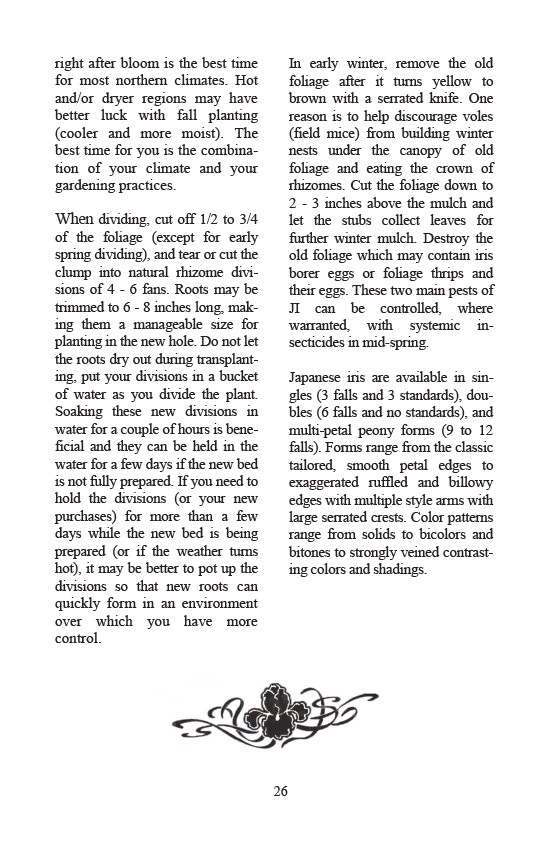
26
right after bloom is the best time
for most northern climates. Hot
and/or dryer regions may have
better luck with fall planting
(cooler and more moist). The
best time for you is the combina-tion
of your climate and your
gardening practices.
When dividing, cut off 1/2 to 3/4
of the foliage (except for early
spring dividing), and tear or cut the
clump into natural rhizome divi-sions
of 4 - 6 fans. Roots may be
trimmed to 6 - 8 inches long, mak-ing
them a manageable size for
planting in the new hole. Do not let
the roots dry out during transplant-ing,
put your divisions in a bucket
of water as you divide the plant.
Soaking these new divisions in
water for a couple of hours is bene-ficial
and they can be held in the
water for a few days if the new bed
is not fully prepared. If you need to
hold the divisions (or your new
purchases) for more than a few
days while the new bed is being
prepared (or if the weather turns
hot), it may be better to pot up the
divisions so that new roots can
quickly form in an environment
over which you have more
control.
In early winter, remove the old
foliage after it turns yellow to
brown with a serrated knife. One
reason is to help discourage voles
(field mice) from building winter
nests under the canopy of old
foliage and eating the crown of
rhizomes. Cut the foliage down to
2 - 3 inches above the mulch and
let the stubs collect leaves for
further winter mulch. Destroy the
old foliage which may contain iris
borer eggs or foliage thrips and
their eggs. These two main pests of
JI can be controlled, where
warranted, with systemic in-secticides
in mid-spring.
Japanese iris are available in sin-gles
(3 falls and 3 standards), dou-bles
(6 falls and no standards), and
multi-petal peony forms (9 to 12
falls). Forms range from the classic
tailored, smooth petal edges to
exaggerated ruffled and billowy
edges with multiple style arms with
large serrated crests. Color patterns
range from solids to bicolors and
bitones to strongly veined contrast-ing
colors and shadings.